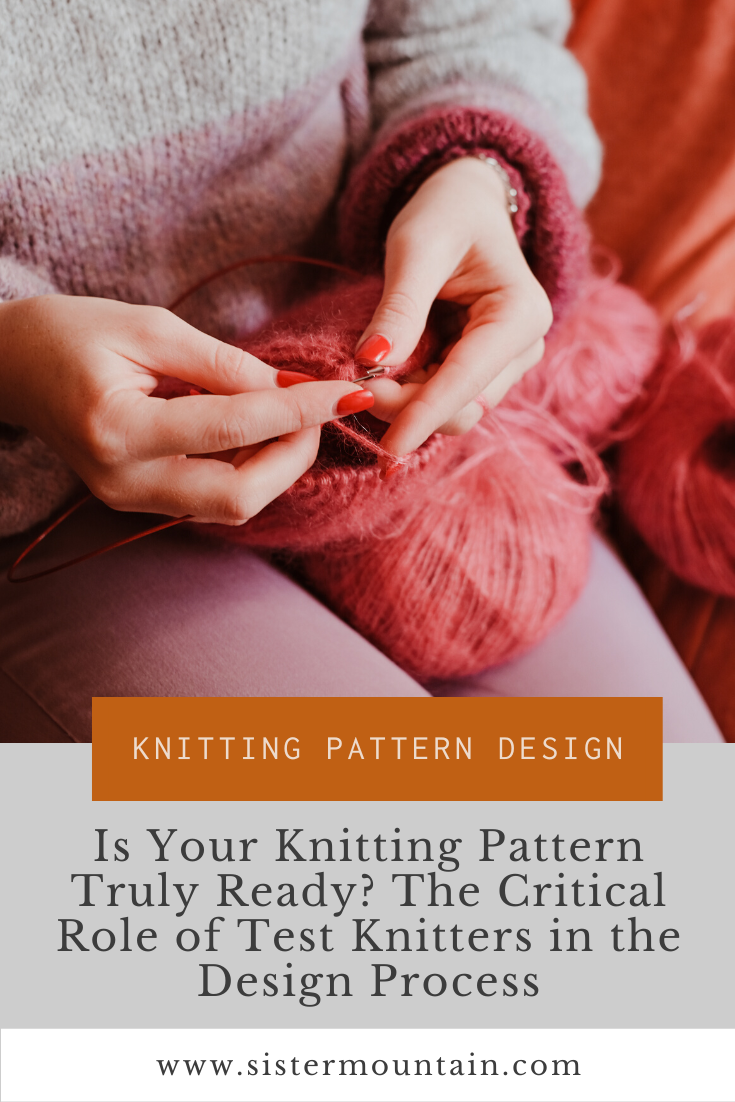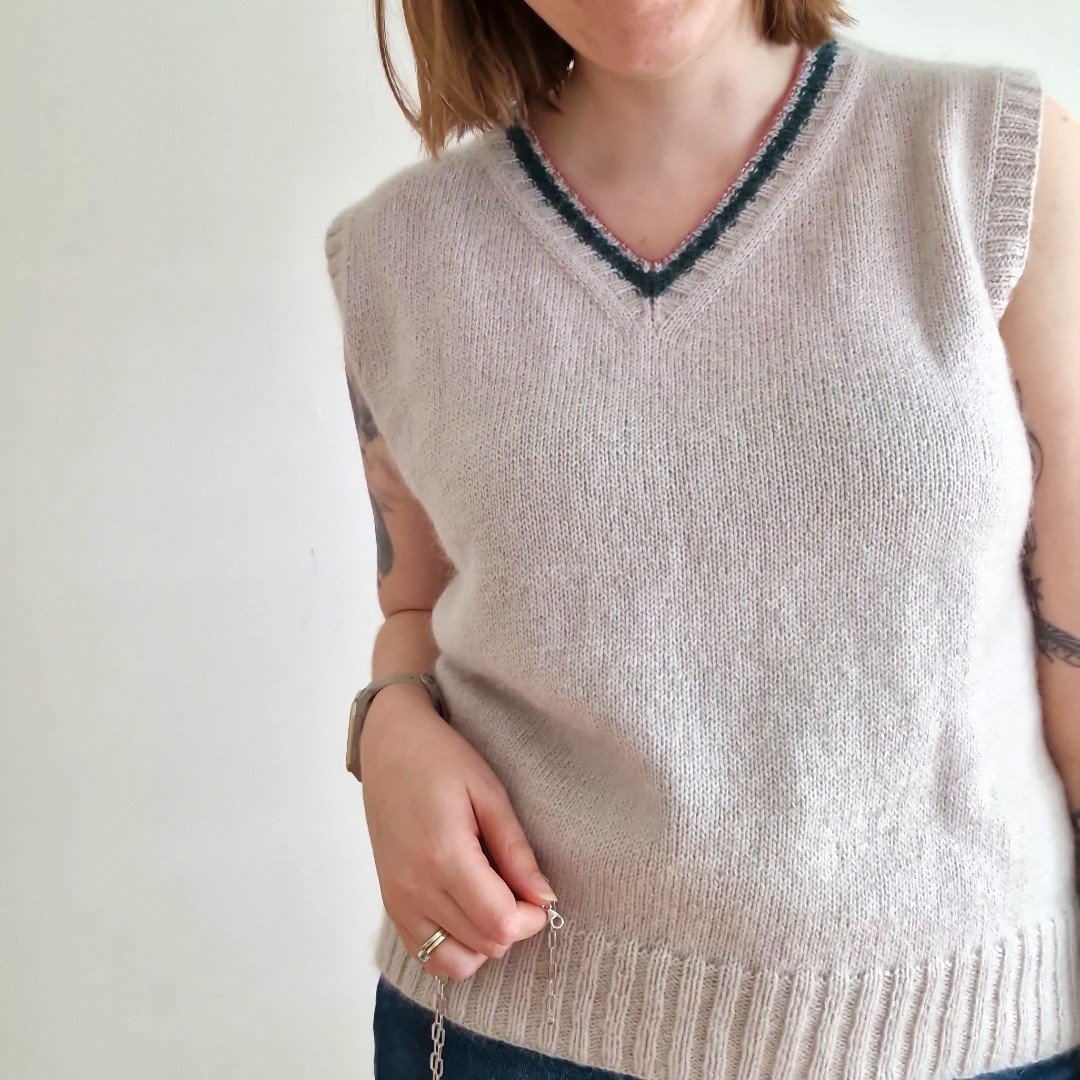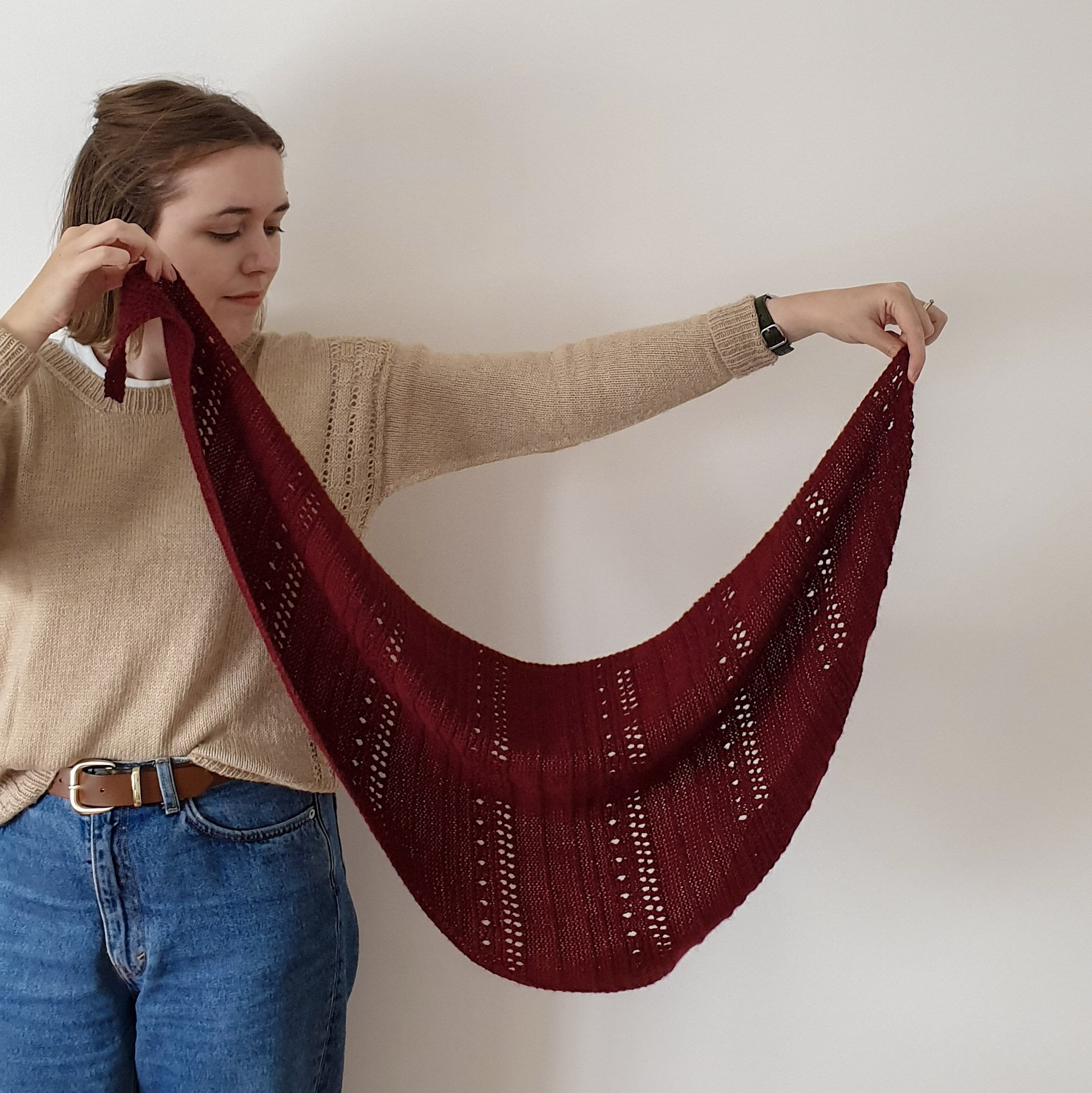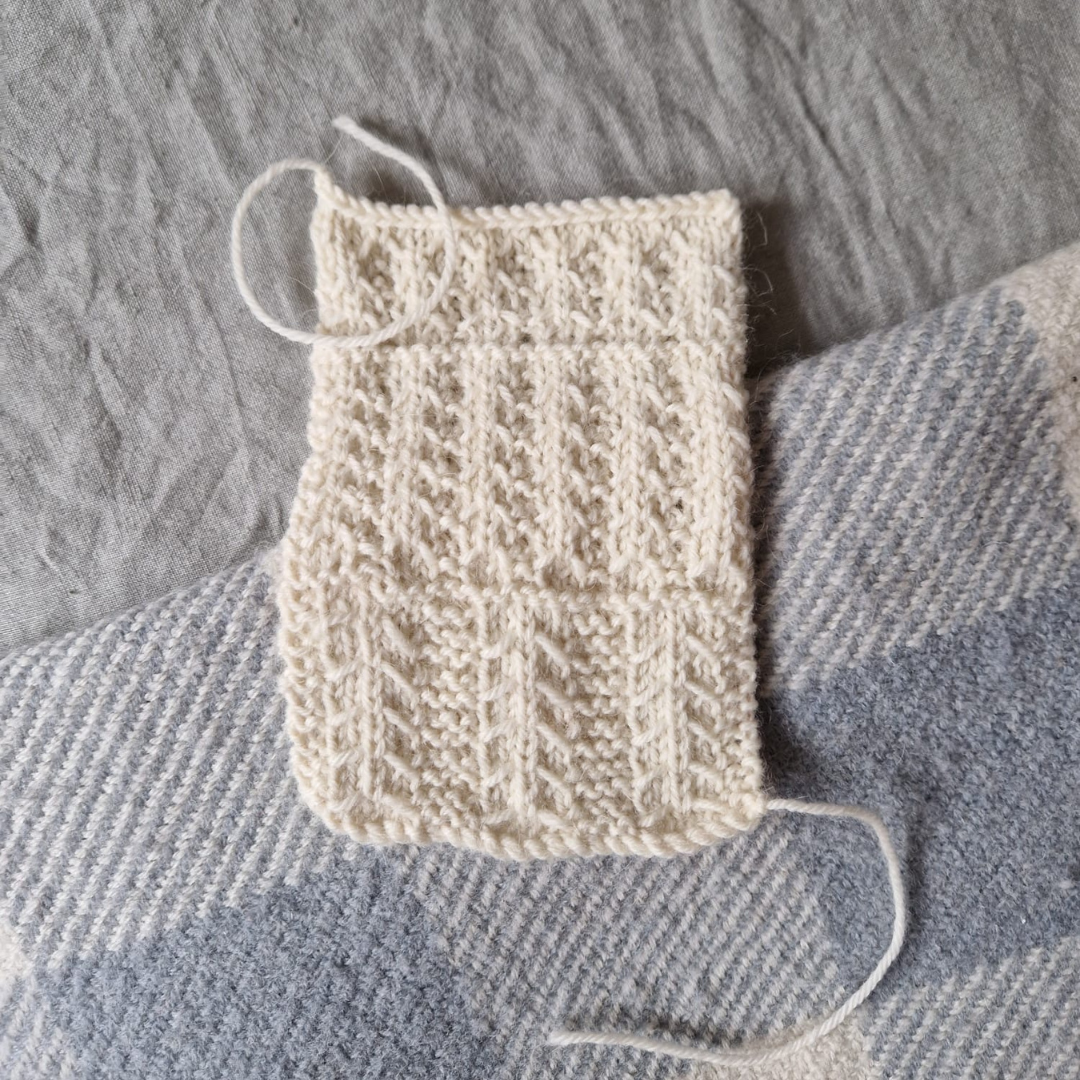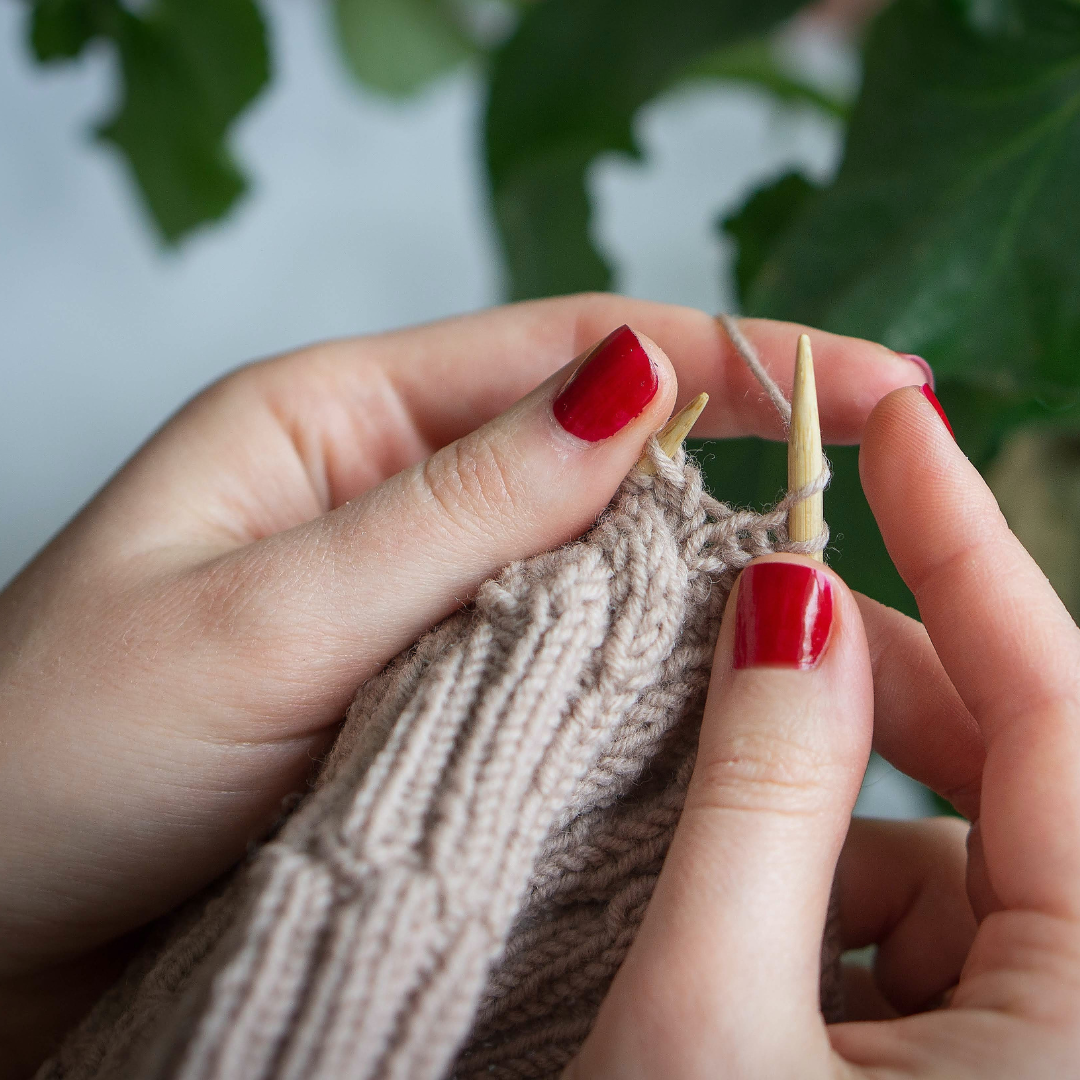Is Your Knitting Pattern Truly Ready? The Critical Role of Test Knitters in the Design Process
You've put so much time and energy into your knitting pattern, thinking the instructions are just right. But sometimes, what's clear to us can be tricky for others.
I totally understand. I've put my heart into designs, thinking they're really easy to follow, only to hear someone got stuck on a part I thought was very clear. It's such a disappointment! But there's a way around it.
This is where test knitters come in. They are the heroes who test our designs, helping us see where our patterns might confuse others. But how do we find them? And just why are they so invaluable to the design process?
Image description: Close up a womans hands as she knits with text overlay saying, is your knitting pattern truly ready? The crucial role of test knitters in the design process.
My Experience with Test Knitters
Starting to design knitting patterns was a mix of exciting highs and teaching moments. I can't forget how proud I felt finishing my first pattern, a hat called Rilo.
However, as I'd soon learn, what seems easy for the creator can be tricky for someone else. I asked a few of my online knitting friends to test the pattern, naively expecting them to find the pattern very easy to follow. Instead, what I got was both appreciation and gentle critique.
For example, one knitter said my chart was hard to follow. Another had to redo parts of their hat because my directions weren't clear enough.
This experience taught me the value of test knitters. They come from different backgrounds and have different skills, spotting things I might overlook.
In another test knit, they helped me see that the armhole of my "Fragment" design wasn’t deep enough, leading me to redesign it. That change made it fit and feel so much better!
What I love about test knitting is the teamwork. Every piece of feedback and suggestion doesn't just improve a pattern; it infuses it with the wisdom of many knitters.
Why Test Knitters are Invaluable
Imagine reading a book full of mistakes and plot holes. It'd be extremely frustrating, wouldn’t it? Similarly, a knitting pattern with errors and areas of confusion can ruin the fun of knitting and waste yarn and time. This is why we need test knitters.
Catching Lingering Errors
An excellent knitting pattern is free of errors. Test knitters are like the final check before you publish your pattern. They knit from the pattern instructions, letting you know if they encounter any mistakes.
Because we are all different, they might spot things that might have been missed earlier by you or your tech editor. If a pattern has been tech-edited and has the thumbs up from test knitters, you know it's good to go.
Improving the User Experience
But it's not just about catching mistakes. We primarily use test knitters to make sure the instructions are clear and easy to follow. Think about when you try a new recipe. A great recipe isn’t just about the final dish but how clear the instructions are.
In the same way, knitting from your pattern should be enjoyable from start to finish. Test knitters help make that happen. They can suggest little changes to the pattern to make it simpler, clearer, and easier to follow.
Image description: Close up of a woman knitting using a light red yarn with a beautiful halo.. The text says Is your knitting pattern truly ready? The crucial role of test knitter in the design process.
Handling Feedback: The Gift of Constructive Criticism
Every creative person, whether they draw, write, or design knitting patterns, puts their heart into what they create. So, when people give feedback, it can sometimes feel personal. But learning to take feedback well can really help us improve.
The Ups and Downs of Feedback
We all love hearing good things about our work. It makes us feel like we're on the right track. But not all feedback is positive, and negative comments can hurt. It's easy to take it personally or doubt our abilities. However, it's essential to remember that feedback helps us get better, and it's not about our worth as people.
Why Constructive Criticism is a Gift
Think of feedback as a tool that sharpens and improves us. It shows us things we might not have noticed. Test knitters, with their different skill sets and backgrounds, give us a complete picture of how our patterns work for others. Their insights help make our patterns clear, versatile, and error-free.
Tips for Taking Feedback Well
Separate Feelings from Facts: When looking at feedback, try not to take it as a comment on you. See it as a way to make your pattern better.
Choose What Matters: All feedback isn't equal. Pick what truly improves your pattern.
Talk It Out: If feedback is confusing or feels wrong, chat with the test knitter. Understand where they're coming from, and it might make more sense.
Make Changes Thoughtfully: After hearing everyone out, decide what changes will make your design shine. Knee-jerk decisions might not always be the best, especially if it’s based on feedback from just one tester.
Say Thank You: Always show appreciation to your test knitters, even if their feedback is hard to hear. They're helping you get better.
Remember, no designer is perfect from the start. We learn and grow by making mistakes and fixing them. Feedback is a way to see where we can do better as designers. So, take it all with a thankful heart and a will to learn and see how your patterns improve.
Overcoming Test Knitting Challenges
Test knitting is a team effort, and like all team projects, there can be bumps along the way. It's more than just troubleshooting parts of your pattern. It's also about working with different people, all with their own lives, challenges, and commitments.
Life Happens
Many test knitters start with lots of excitement and dedication. But sometimes, life throws a curveball - they might have personal stuff come up, other commitments, or they might just change their mind. It's normal for someone not to finish the test knit.
What Happens When Someone Drops Out?
When someone drops out of the test knit, it's not just their feedback we miss out on. If they were working on a specific size or style of the pattern, that part might go untested. This can slow down the pattern's release, especially if we have to find someone else to test it.
How to Keep Things Running Smoothly
Have a Backup Plan: It's a good idea to have at least two people testing each size or style. That way, if someone can't finish, you still get feedback.
Keep Communication Open: Let your testers know it's okay to tell you if they face any issues or can't continue. This helps everyone be on the same page and creates a supportive atmosphere.
Set Clear Timelines: Regularly checking in helps you see how everyone is doing and allows testers to share any problems or questions.
Have a Few Extras Ready: Consider having a couple of backup test knitters. These can be people who wanted to test knit at first, but there wasn't enough room. They can step in if needed.
Remember, bumps in the road are natural in test knitting. With some planning and understanding, you can sail through them and make the process enjoyable for everyone.
Going with the Flow
Having a plan is important, but being open to change in the test knitting process is just as vital. Being adaptable, understanding, and thinking ahead can help you overcome challenges and make sure your pattern is the best it can be.
Like any part of the design process, test knitting needs patience, preparation, and a sprinkle of flexibility. By getting ready for any twists and turns and staying proactive, you'll tap into the wisdom of your testers and make your pattern the best it can be.
Image description: A woman is sitting with her head bent down concentrating on her knitting.
Gathering Your Test Knitting Team: How to Connect with Test Knitters
Writing a knitting pattern is just the beginning. The real magic happens when you work with a group of reliable test knitters. These are the people who'll help you polish your design, give you feedback, and often become friends in the process. Here's a simple guide on where to find them and how to keep the relationship going strong.
Where to Find Great Test Knitters
Ravelry: There are several groups dedicated to test knitting, so it's an excellent place to ask for people who'd like to test your pattern.
Social Media: Instagram has a huge knitting community, so it's an excellent place to ask for test knitters. There are even accounts that will promote your test knit for you, such as Fat Test Knits.
Yarnpond: This is my new favourite! As a platform specifically designed for test knitting, Yarnpond is a treasure trove of enthusiastic, experienced testers. It helps to streamline the collaboration process, ensuring a smooth testing process.
Starting on the Right Foot with Your Testers
Communicate Clearly: Right from the start, let them know what you expect from them, when you need feedback and any other important details. This keeps everything clear and avoids mix-ups.
Stay Organised: Have a set place, like an email, forum or Slack space, where testers can share their thoughts. It helps keep everything in one spot and ensures you hear all their helpful feedback.
Show Thanks: Everyone likes to be appreciated. A kind message, a discount on yarn, or gifting them free patterns are small things that can mean a lot.
Keeping the Connection Strong
Stay in Touch: Once testing ends, let them know how your pattern launch went. Share the final pattern, any changes you made, and other test knits they might like to join next.
Listen to Them: Ask them how they found test knitting for you. Their feedback can help make the following test even better.
Building a group of test knitters is like making new friends. It takes time, care, and understanding from both sides. But when it works, it's a beautiful thing that can help your patterns shine and add a lot of joy to the design process.
Conclusion: The Magic of Design and Test Knitting
In the big world of knitting, there's a unique partnership between knitting pattern designers and test knitters.
From the first idea to the finished pattern, test knitters help make a design the best it can be. They give feedback, support the designer, and help turn a simple idea into something many knitters will love.
If you're a designer, here's some advice: Value your test knitters. Listen to their feedback, even if it's tough. Every piece of feedback helps make your design even better. Remember, test knitters are there to help you make your pattern as straightforward and easy to work from as possible.
Have you ever been involved in the test knitting process, maybe as a designer or test knitter? What was a moment that stood out to you? Share your experiences, and let's celebrate the wonderful thing that is test knitting!

